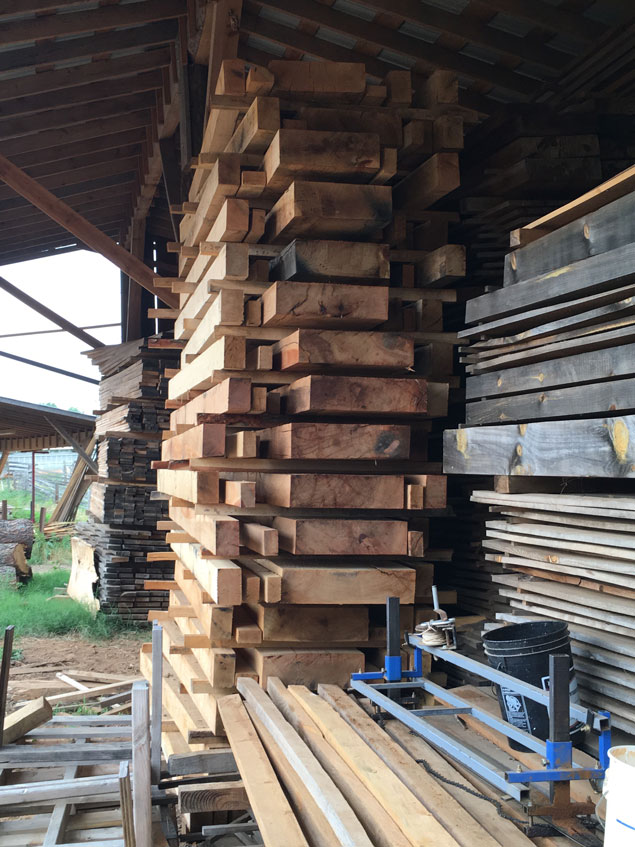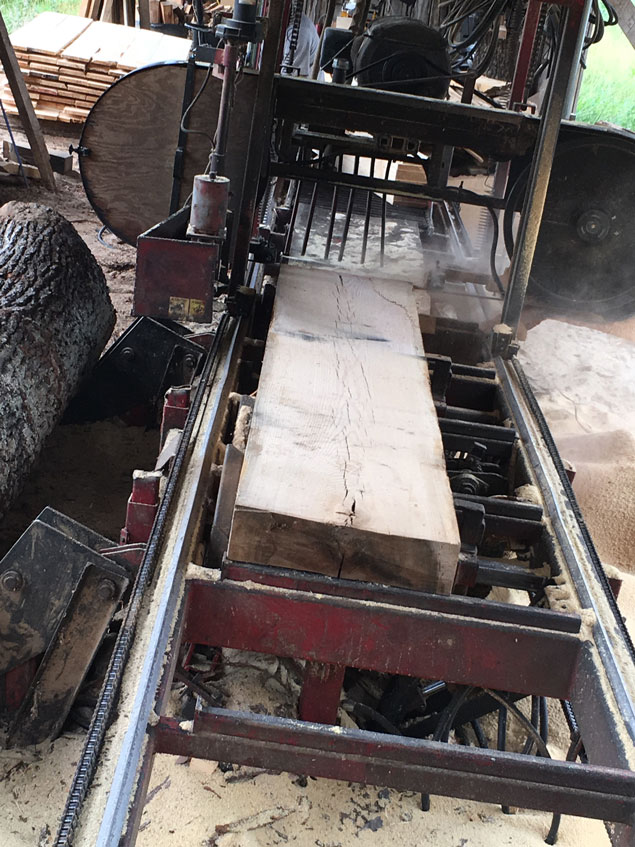We may receive a commission when you use our affiliate links. However, this does not impact our recommendations.
Seasoned, well-dried wood is good, but not for all things.
For the last two years I’ve been editing a book called “Woodworking in Estonia,” which is about the pre-industrial woodworking cultural heritage of a small Northern European nation.
The book is not a review of the historical literature sprinkled with speculation about how people worked. Instead, the author spent his entire life interviewing people who still worked in traditional ways, and then he dug up archaeological and ethnographic evidence to back up their methods.
What is most remarkable is that Estonians used wood in all its states, from completely green to pieces at perfect equilibrium moisture content with their environment (though those are not the words they would use to describe things).
Earlier woodworkers knew the material in a way that we do not.
I got a small taste of this several years ago when building a bunch of workbenches using 18th-century oak that had been felled for more than a decade. At the time, we assumed it was pretty dry. We were wrong. The wood maxed out our moisture meters at 60 percent, so it was probably much wetter than that.
At the time I can remember freaking out a bit. Surely these benches would splinter to bits. Or distort in ways that would make them unusable. Or at least make the glue joints fail.
None of those things happened. I built a workbench using that wet, wet wood and it is sitting in my shop right now, an un-moveable monolith that didn’t distort at all. It shrank and then stayed that way, with every joint tighter than when I made them. The components are so thick that they hardly move during the year – there isn’t enough time for the interior to react to the changes in humidity.
Emboldened by “Woodworking in Estonia” and my own experiences during the last decade, I’ve resolved to build a French-style workbench from red oak that is freshly sawn from the forest. This week I traveled to North Carolina and picked out stock for the top, legs and stretchers and brought it over the mountains to my shop in Covington, Ky.
It is incredibly wet and heavy. The 9’-long top (6” thick and 19” wide) weighed so much that five average-size people could barely manage it out of the van and into the shop. It is so wet that the ends feel perpetually cool, and they stink up the shop like a horse just peed in there.
We’re going to build a proper joiners’ bench with this wood, record the experience and report how the bench does in the coming years. My guess is that the bench will end up working out just fine. And my hope is that a lot of woodworkers can get away with using wet wood for their benches, saving money and time.
But I am completely open to the possibility that the bench will fail. Either way, I’ll report the results here. And either way, I win. If the bench fails, I’ll still have my existing workbench and a lot of oak firewood.
— Christopher Schwarz
Here are some supplies and tools we find essential in our everyday work around the shop. We may receive a commission from sales referred by our links; however, we have carefully selected these products for their usefulness and quality.











PERFECT timing! I just picked up a pile of rough-sawn 6″ x 6″ x 8′ white oak beams this past week (for $50!!!! Score!!!) and I was trying to figure out how to dry them so I could build a french bench. I was well into planning how to explain to my wife all the benefits of building a kiln in the basement when I saw this post. Looking forward to seeing your progress, particularly on the through joints where the legs meet the top. They’ll have to shrink, right?
I’ll be doing the same thing with white oak. I’ll post my progress and findings in the comment sections as you do in these articles.
Chris,
I have a 6″ x 25″ x 10′ red oak slab freshly cut. I think it was purchased from the same gentleman you bought your slab from. I was contemplating doing the same thing you are above. Hope you post often. I plan to follow along closely, but stay behind you chronologically so I might benefit from your experiences [mistakes].
I can tell there is already a slight cup and bow in the slab. My slab was cut right next to the heart. Am I correct that one would expect less movement from heart material than from material closer to the bark side?
MD moving into woodworking
I love to read about green woodworking projects and techniques. When you think about the relatively short time that we have had the machine age versus what came before, it is a reminder of how arrogant we have become. At a time when sustainability is becoming important again, it is good to preserve and rediscover lost techniques that worked well for so long. Who knows? We may need them in the future!
Have fun and try not to get a hernia!
Are you planning to let it acclimate at all in the shop or will you just jump right into it?
Chris,
I really appreciate you taking on this project. My bench timbers are being milled next month and I doubt I possess the patience to wait for them to “dry”. What sort of end vise are you contemplating? In my case a wagon vise is a strong contender but I am concerned that the sharp change in cross section of the top will crack as the top is drying.
I will be anxiously following the developments!